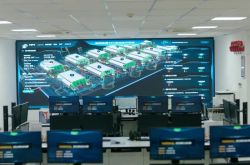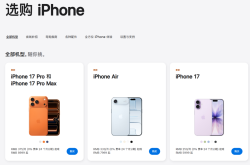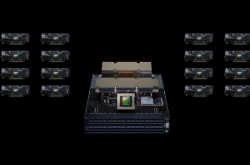Apple's new Mac lineup: riding the AI PC wave, chips as Apple's backbone?
![]() 11/01 2024
11/01 2024
![]() 465
465

MacBook Pro steals the show.
On the night of October 31, Apple unveiled the new MacBook Pro powered by the M4 chip series, joining the M4 Mac mini and M4 iMac released earlier in the week, rounding out this week's "M4 Mac Triple Threat".
Compared to the all-in-one iMac, the new Mac mini and MacBook Pro are undoubtedly the focus of attention. Specifically, Apple's latest Mac upgrades demonstrate considerable sincerity, featuring an across-the-board upgrade to the M4 chip and 16GB of RAM as standard, all at the same starting price. Additionally, the Mac mini now sports a brand-new "truly mini" design.
Modest M4 performance enhancements, MacBook Pro's screen and battery life shine
Ultimately, the "Pro" in MacBook Pro hinges on performance, the most fundamental and crucial aspect. Thus, any discussion of the new MacBook Pro inevitably touches upon Apple's M4 chip.
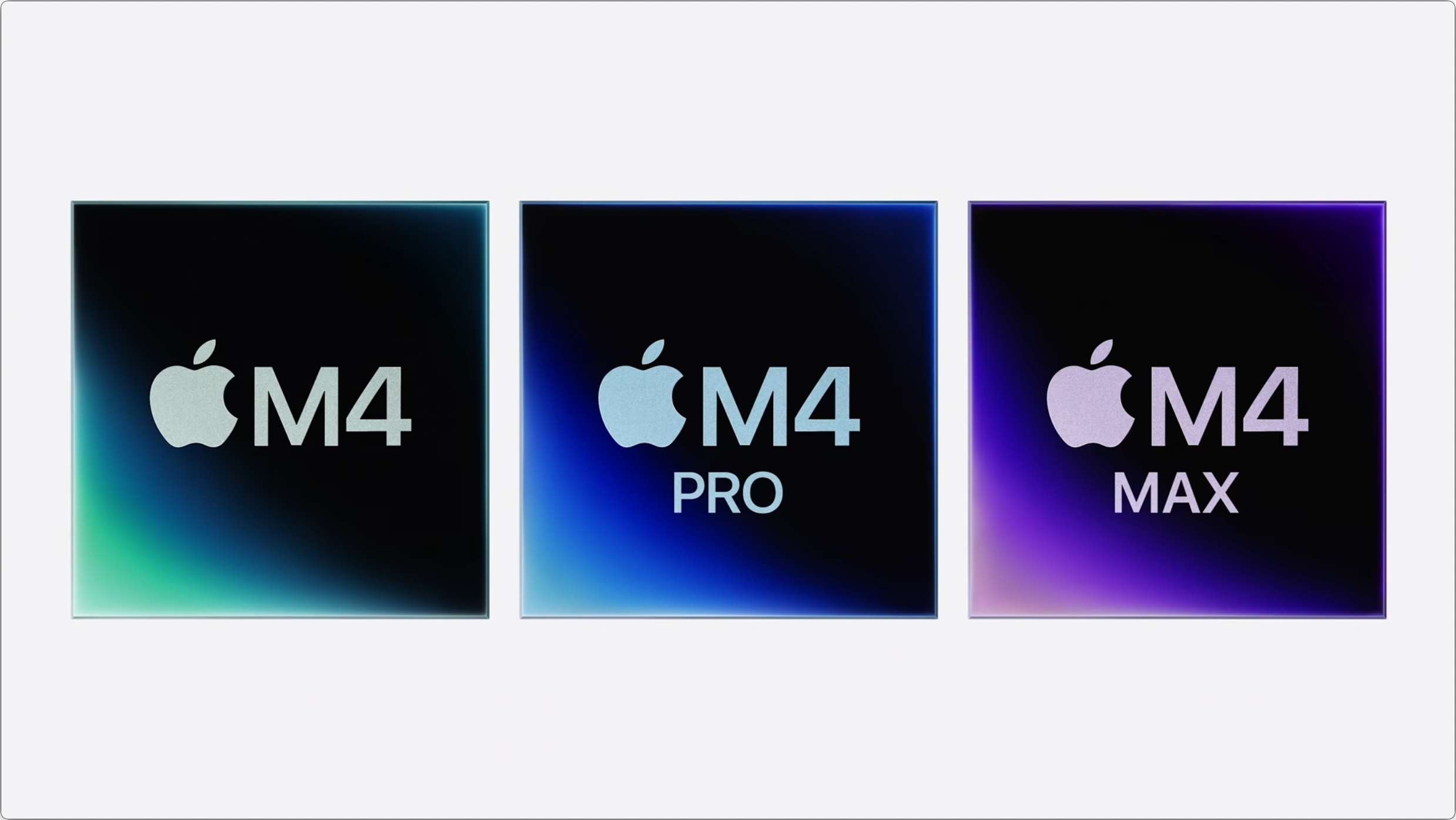
Image/Apple
Serving as the "heart" of the MacBook Pro, the M4, M4 Pro, and M4 Max chips all utilize TSMC's second-generation 3nm process and come standard with 16GB of RAM, offering higher bandwidth and faster memory within a unified memory architecture.
According to Apple's official data, the MacBook Pro (14-inch) equipped with the M4 chip offers up to 1.8 times the performance of the MacBook Pro (13-inch) with the M1 chip, roughly translating to a 12.5% performance boost over the M3 version.
In contrast, the MacBook Pro models featuring the M4 Pro and M4 Max chips exhibit even more impressive performance gains. Compared to the M1 Pro version, the M4 Pro MacBook Pro boasts up to 3 times the performance, a roughly 114% increase over the M3 Pro version.
In simple terms, the performance of the M4 MacBook Pro aligns with previously leaked benchmarks, showing modest improvements over its predecessor, particularly when compared to the workstation-oriented M4 Pro and M4 Max MacBook Pros. Of course, performance enhancements will vary depending on the task, such as a 3.4x speedup in 3D rendering with Blender compared to the M1 version.
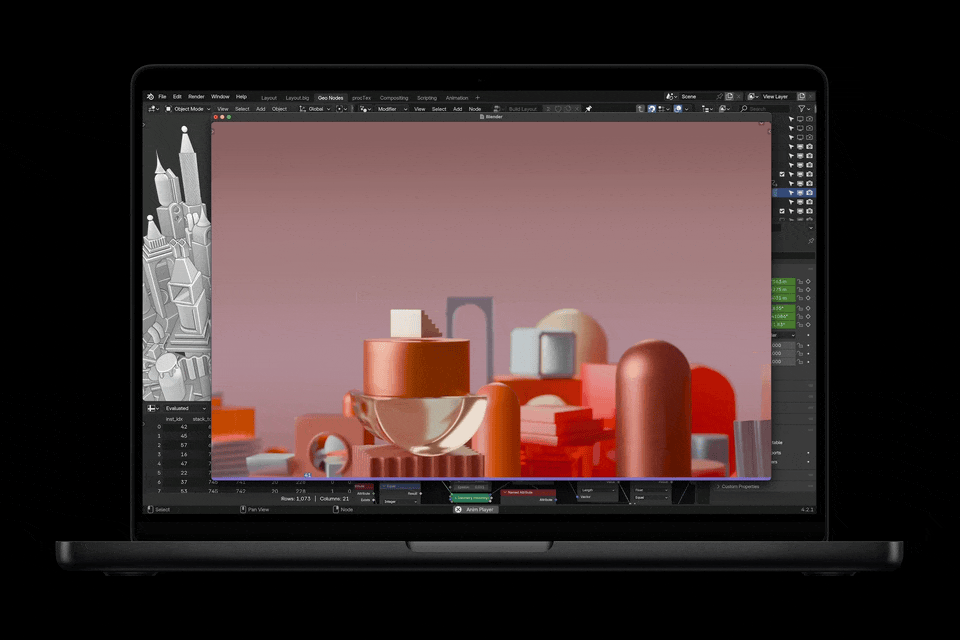
Image/Apple
The screen has always been a significant advantage for Macs, and the M4 MacBook Pro does not disappoint. Building on its predecessor's high brightness, the new 14-inch and 16-inch displays further enhance anti-reflection with nano-texture glass, a significant upgrade for professional creators, improving visibility outdoors and in complex lighting environments.

Image/Apple
Battery life is another critical advantage for Macs. Compared to the previous generation's 22 hours (for streaming video playback), the M4 MacBook Pro extends this to 24 hours, likely due to an upgraded battery from 70Wh to 72.4Wh.
Most importantly, there's the price. Despite upgrading the base RAM from 8GB to 16GB, Apple has commendably maintained the MacBook Pro's starting price at RMB 12,999.
While this price point is still considered expensive, Apple clearly understands its MacBook Pro target audience: users with high demands for performance, portability, and stability. For professionals, the MacBook Pro's key lies in reducing work hours and enhancing efficiency through performance improvements while maintaining portability and stability.
The smallest computer ever, and the most valuable Mac mini generation
Compared to the MacBook Pro and iMac, the Mac mini saw the most significant upgrades. As a representative of Apple's compact and efficient lineup, this generation of Mac mini not only boasts a notable performance boost but also features a groundbreaking design change, making it a compelling option for both professional and home users.
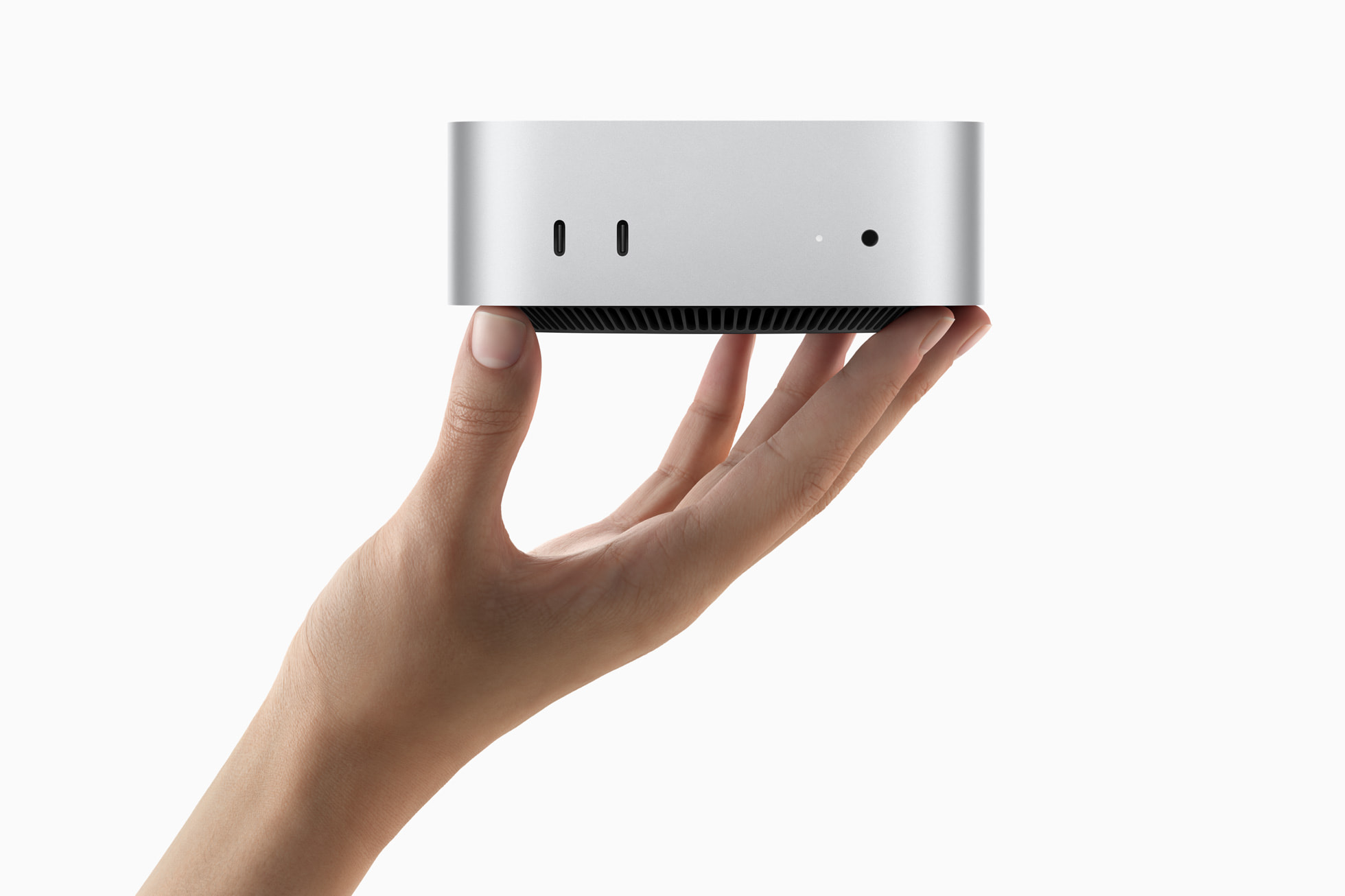
Image/Apple
The new Mac mini abandons its long-standing design, shrinking from 7.75 inches to just 5 inches square, not only enhancing aesthetics but also significantly saving desktop space and improving portability. Additionally, all USB-A ports have been replaced with USB-C ports, with two front-facing USB-C ports added for user convenience.
Furthermore, the M4-powered Mac mini supports driving up to two 6K monitors plus one 5K monitor simultaneously, while the M4 Pro version supports three 6K monitors, great news for multi-monitor users.
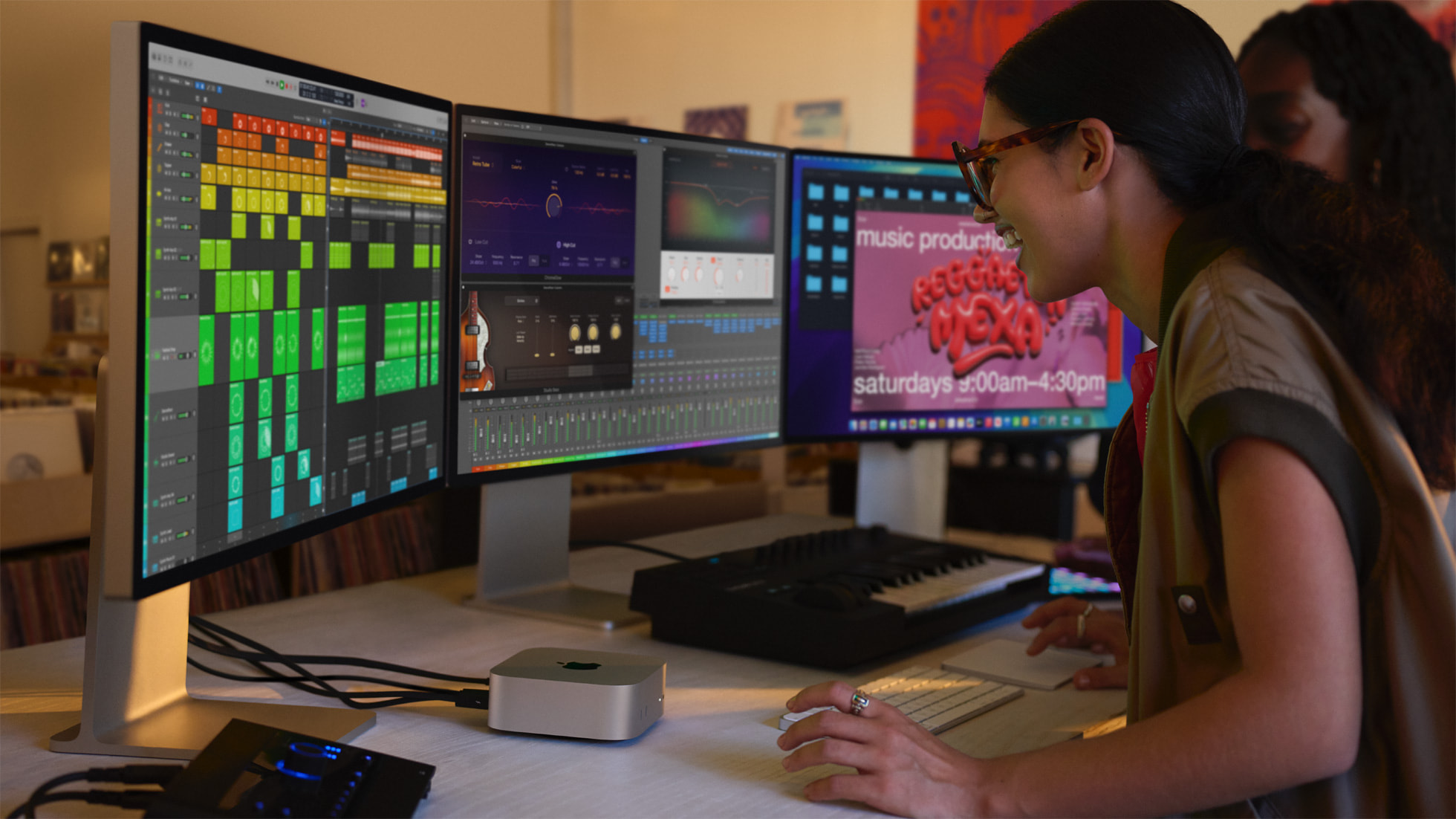
Image/Apple
Its lightweight design makes the new Mac mini ideal for home use or space-constrained work environments, especially for users with minimal workstation needs. Apple continues to offer the classic silver color, which, despite its simplicity, complements various devices aesthetically.
While slightly thicker, Apple has improved the Mac mini's thermal architecture to ensure that the compact design does not compromise the performance of the M4 or M4 Pro chips.
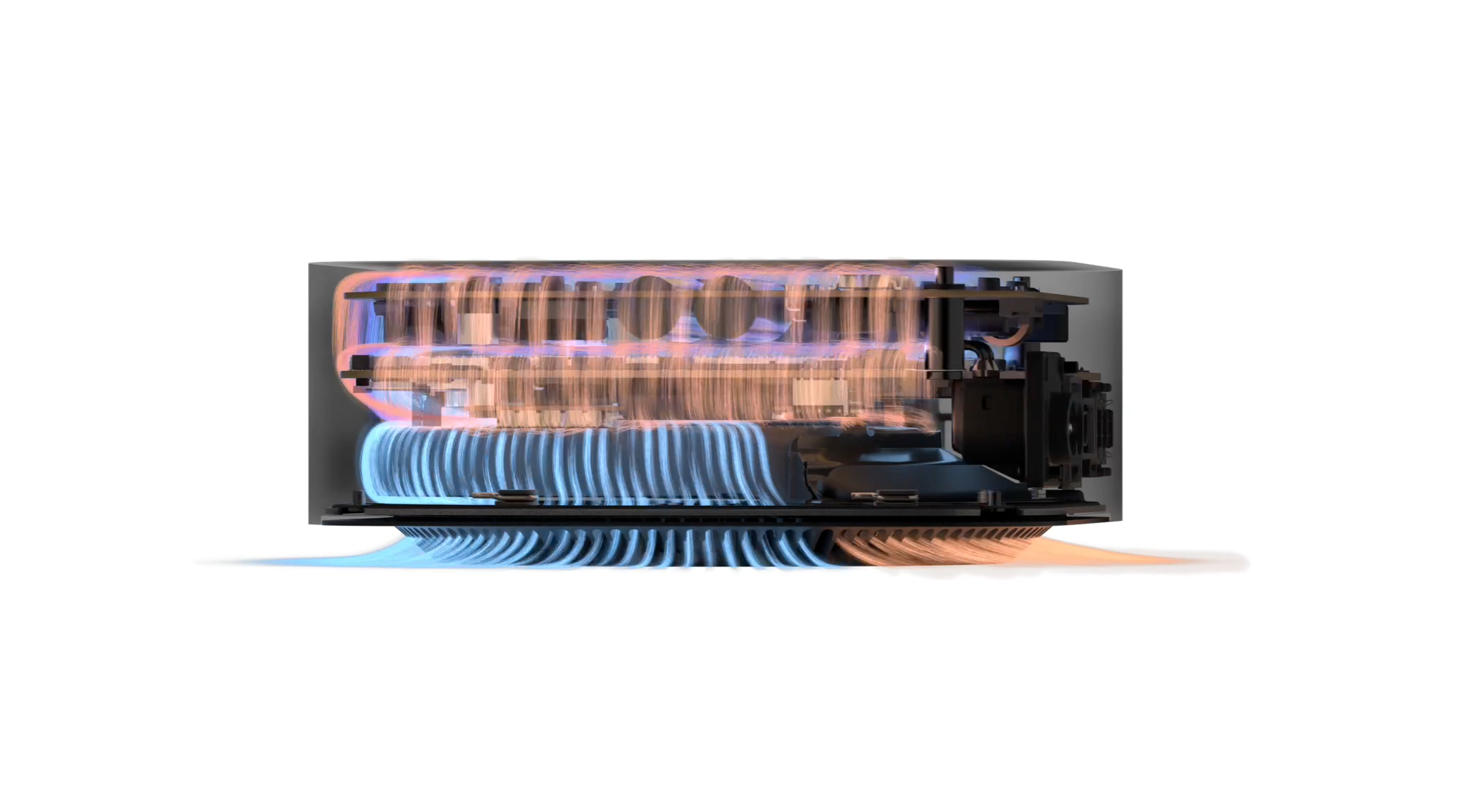
Image/Apple
According to the animation on Apple's official website, the new Mac mini's thermal architecture draws air from the bottom, passes it through the processor and GPU, and exhausts it from the back, creating a well-ventilated environment. This design maintains stability under prolonged loads and prevents overheating and frequency reduction, enhancing sustained performance.
Regarding pricing, like the MacBook Pro, the M4 Mac mini maintains the same starting price of RMB 4,499 despite the RAM upgrade to 16GB. Of course, users with higher demands can opt for larger storage capacities and RAM configurations – the M4 Pro version supports up to 64GB of RAM and 8TB of SSD storage.
Overall, the new Mac mini is not only the "smallest computer" but also offers excellent value for money. Especially for users with simple usage scenarios but high stability demands, it provides exceptional performance at roughly one-third the price of the MacBook Pro.
The AI PC wave surges, and chips are Apple's trump card?
Whether it's the new iMac, MacBook Pro, or Mac mini, the common denominator is the M4 chip: larger unified memory, increased bandwidth and speed, and an increasingly important neural engine. These changes converge on one key area: Apple Intelligence.
As Apple repeatedly emphasized in the introductions of its three new products, "Apple Intelligence ushers in a new era for Mac, bringing personal intelligence to personal computers." Starting with the M3 MacBook Air earlier this year, Apple has embraced the AI PC wave. In its latest quarterly earnings report, Apple also stated that it will continue to invest in AI-related projects in fiscal year 2025.
This shift is accompanied by certain adjustments in Apple's product strategy.
On October 28, Apple announced the first wave of Apple Intelligence features officially available on iPhone, iPad, and Mac. On Mac, Apple Intelligence has penetrated the operating system's core, supporting various global AI features, including automatic text processing, image removal, smart replies, and an underlying upgrade for Siri with ChatGPT integration.
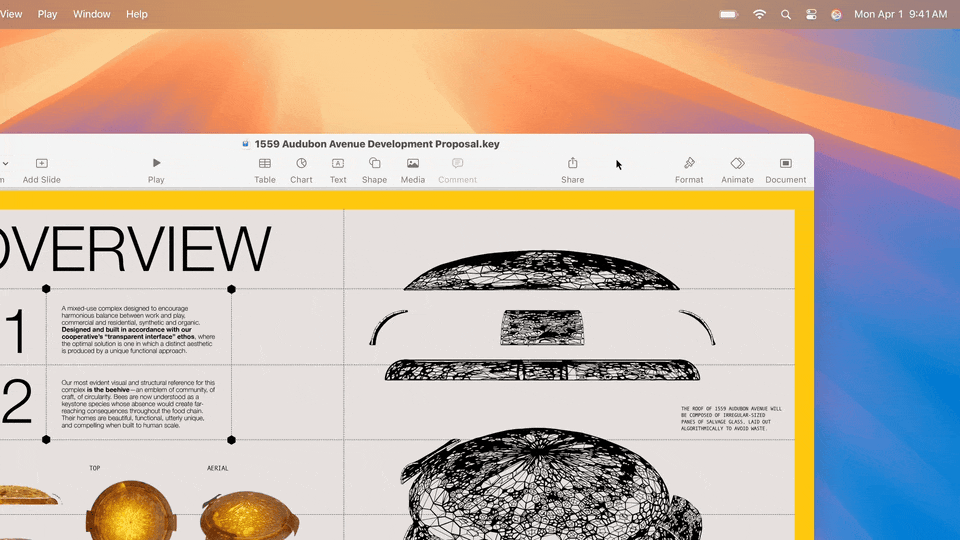
Image/Apple
Rather than rushing into flashy AI gimmicks, Apple has adopted a more steady approach: making AI truly serve users. This strategy aims to turn AI into a productivity tool, helping users focus on creation and thinking without being interrupted by complex operations.
Building on the neural engine of the M4 chip, this generation of Macs emphasizes enhanced AI performance. For example, the M4 MacBook Pro offers over 3 times the performance of the M1 version, with the M4 Max version capable of running nearly 200 billion parameter large language models locally with sufficient RAM.
Another Apple strategy involves strengthening a unified AI experience through ecosystem integration, making data and user experience between Mac, iPhone, iPad, and other devices more seamless and unified.
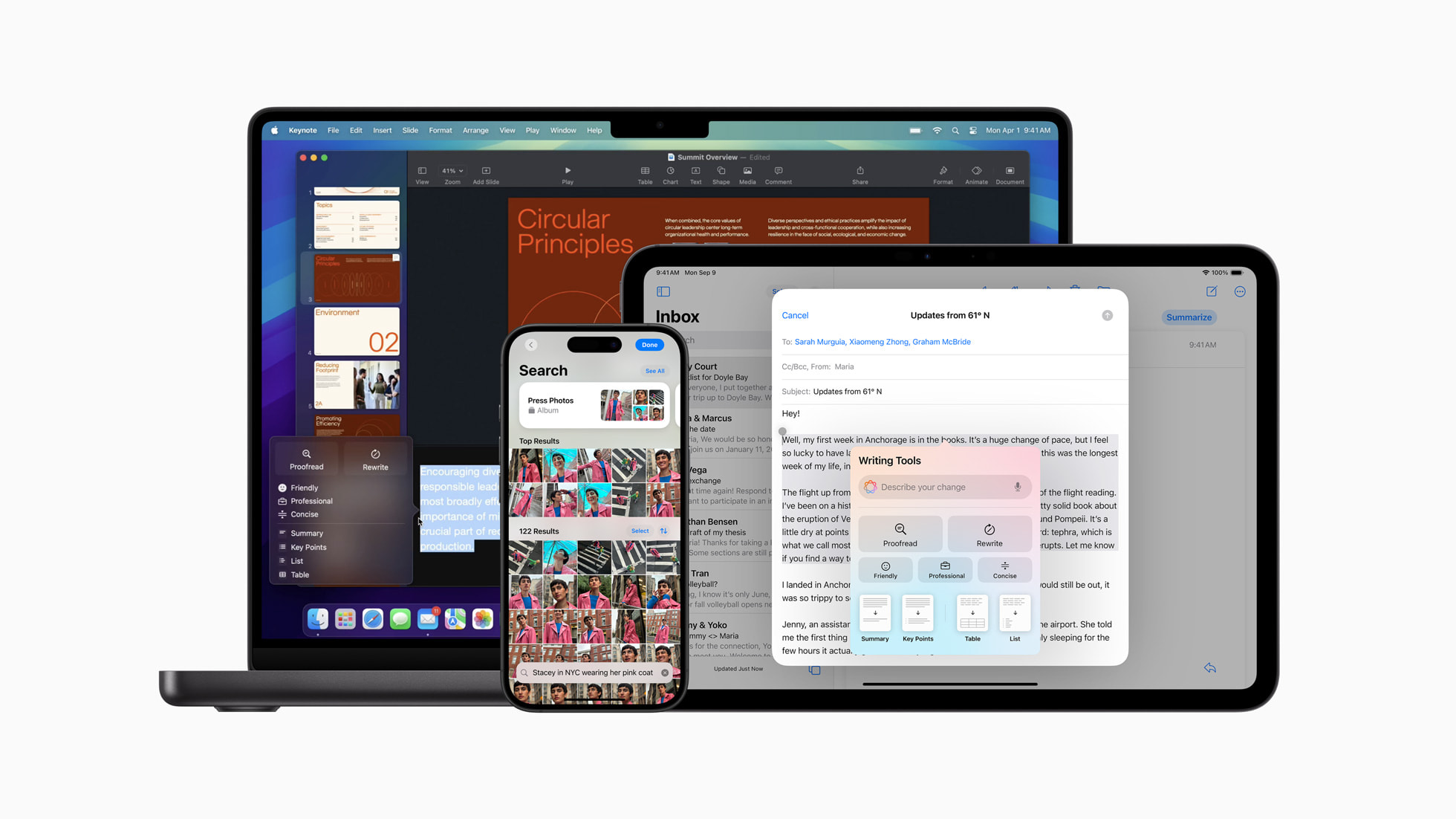
Image/Apple
Unlike other device manufacturers, Apple's unique advantage in AI applications lies in its comprehensive control over hardware and software, coupled with the integration of Apple Intelligence's private cloud computing. Building on its cross-device ecosystem, Apple's Apple Intelligence enables system-level AI functions to be used globally and synchronized across devices.
In today's increasingly AI-pervasive era, privacy concerns are gaining prominence. Apple is aware of this, with many Apple Intelligence AI functions computed locally, reducing the risk of data processing in the cloud. Apple has also established private cloud computing clusters and data centers, ensuring AI processing speed and quality while upholding its brand commitment to privacy and security.
With the release of this round of Mac products equipped with the M4 chip, Apple has demonstrated its product direction in the AI PC era: leveraging Apple Intelligence as the core to address hardware shortcomings, expanding existing performance and energy efficiency advantages, and delivering a "true intelligence" experience through comprehensive hardware and software integration.
This is just the beginning. Future Macs may witness breakthroughs in productivity and intelligent experiences as Apple Intelligence evolves. During its recent earnings call, Apple revealed that Apple Intelligence will expand to more countries and regions next year, with additional features arriving in April.
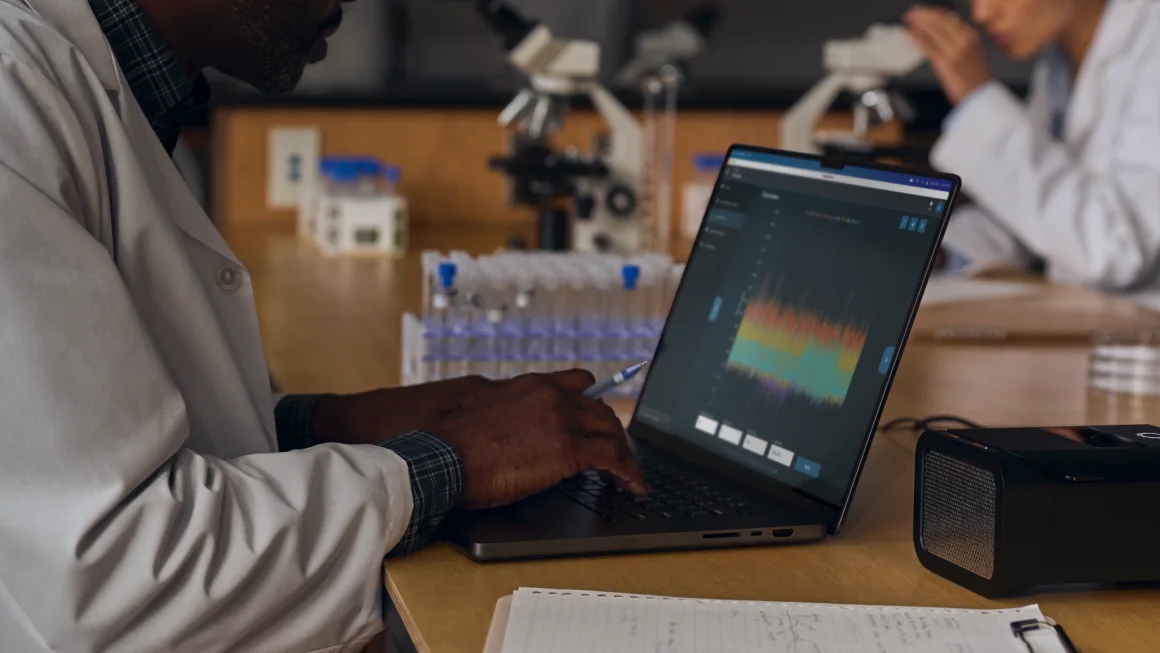
New MacBook Pro, Image/Apple
However, the qualitative changes that AI PCs can bring to the user experience are still being explored across the industry. Ultimately, edge AI heavily relies on hardware resources, demanding greater computing power, stability, and energy efficiency.
Most importantly, the consumer electronics market ultimately judges products based on the user experience they deliver. For Apple, accelerating the development and application of large models, leveraging edge AI computing power, and maximizing vertical integration from chips to operating systems to hardware are crucial.
Conversely, this opportunity is not exclusive to Apple.
Source: Leitech


